 “No nation can move forward, unless it squarely faces its past. The courage to remember helps us not to repeat the same mistakes and to build a better future for our children” – Sri Sri Ravi Shankar
“No nation can move forward, unless it squarely faces its past. The courage to remember helps us not to repeat the same mistakes and to build a better future for our children” – Sri Sri Ravi Shankar
On Madras Day, the day celebrated as the founding day of Chennai when the Nayak of Poonamallee ceded a strip of land and the fisher village of Madrasapattinam to Francis Day of the East India Company on 22 August 1639, the Deccan Chronicle published the following item on the inside of its front page. The piece, written by Pradeep Damodaran, was called “Unmistakeably Nawabi” and reads thus:
A tribute to Chennai or Madras cannot miss out the Nawabs of Carnatic who ruled a large part of Tamil Nadu and other states for a long period of time. Triplicane, Ice House and Royapettah were some of the areas where Muslim history traces back to even before the official birth of Madras.
According to Nawab Mohammed Abdul Ali, Prince of Arcot, who is a direct descendant of the rulers of Carnatic, true secularism was established in the city as early as 1700s.
“One of my forefathers, Nawab Muhammad Ali Wallajah was one of the seven independent rulers and ruled the region between 1749 and 1795.
The Public Works Department building on Kamaraj Salai used to be the palace of the nawabs during their halcyon days and several other monuments have been handed over to the state during the later years and continue to adorn the Chennai skyline.
 The Prince of Arcot’s claim that his ancester, Nawab Muhammad Ali Wallajah, indulged in “secular” activities such as supplying building materials to an infidel’s temple, led us to do some research on this gazetted princely family and their fore bearers. What we found was rather shocking.
The Prince of Arcot’s claim that his ancester, Nawab Muhammad Ali Wallajah, indulged in “secular” activities such as supplying building materials to an infidel’s temple, led us to do some research on this gazetted princely family and their fore bearers. What we found was rather shocking.
Amir Abdul Ali is himself not a secularist or advocate of free speech. He has used his official position and influence with the chief minister to have Francois Gautier’s cultural exhibition on Aurangzeb violently closed down in March 2009.
From Wikipedia we learned that the Nawabdom of the Carnatic was created by the Mughal emperor Aurangzeb in 1692. He appointed Zulfikar Ali as Nawab of the Carnatic, with his seat at Arcot, as a reward for his victory over the Marathas.
As the Vijayanagara Empire was in serious decline, the Nawabs of the Carnatic controlled a vast territory south of the Krishna river. The Nawab Saadetullah of (1710-1732) had his court at Gingee and later moved it to Arcot.  His successor Dost Ali (1732-1740) conquered and annexed Madurai in 1736.
His successor Dost Ali (1732-1740) conquered and annexed Madurai in 1736.
Muhammad Ali Wallajah (1749-1795 ) was freed from his suzerainty and made the independent ruler of the Carnatic by the Mughal emperor in 1765. His rule was long and mostly peaceful. He donated generously to churches, temples and mosques. The temple at Sri Rangam was one which benefited from his generosity.
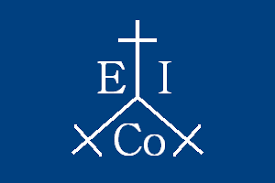 The growing influences of the English and the French and their colonial wars had a huge impact on the Carnatic. Wallajah supported the English against the French and Hyder Ali, placing him heavily in debt. As a result he had to surrender much of his territory to the East India Company.
The growing influences of the English and the French and their colonial wars had a huge impact on the Carnatic. Wallajah supported the English against the French and Hyder Ali, placing him heavily in debt. As a result he had to surrender much of his territory to the East India Company.
The thirteenth nawab, Ghulam Muhammad Ghouse Khan (1825–1855), died without issue and the British annexed the Carnatic Nawabdom applying the doctrine of lapse. Ghouse Khan’s uncle Azim Jah was created the first Prince of Arcot—Amir-E-Arcot—in 1867 by Queen Victoria, and was given a tax free pension in perpetuity. This privilege continues to be honoured by the Government of India. Its status is protected by the Indian Constitution and the family continues to retain its privileges and titles. The current Prince of Arcot, Abdul Ali, came to the title in July 1994.
 So far so good. The fact that the current Prince of Arcot continues to hold his title and collect his pension when all other kings and princes of India—there were over 600 of them at the time of Independence—have been disenfranchised and relegated to the dustbin of the secular, socialist Indian republic, is one of those anomalies found only in India. But there is more to the history of the Nawabs of Arcot and their successors the Amirs-E-Arcot than that revealed by the present Amir Mohammed Abdul Ali, who is in a state of denial when it comes to the violent history of his forefathers, or the Wikipedia article quoted above.
So far so good. The fact that the current Prince of Arcot continues to hold his title and collect his pension when all other kings and princes of India—there were over 600 of them at the time of Independence—have been disenfranchised and relegated to the dustbin of the secular, socialist Indian republic, is one of those anomalies found only in India. But there is more to the history of the Nawabs of Arcot and their successors the Amirs-E-Arcot than that revealed by the present Amir Mohammed Abdul Ali, who is in a state of denial when it comes to the violent history of his forefathers, or the Wikipedia article quoted above.
 The Nawabs of Arcot were sectarian temple-breakers just like the founder of their dynasty, the religious bigot Aurangzeb. A quick perusal of Sita Ram Goel’s Hindu Temples: What Happened To Them, Vol 1, gives an extraordinarily long list of the Hindu temples destroyed or occupied in Arcot, the capital of the Nawabs, when they occupied the Hindu pilgrimage town in 1712. The list of temples destroyed or occupied by Muslims for Arcot and Vellore (Arcot is now part of Vellore city), and Gingee, the original capital of the Nawabs, reads:
The Nawabs of Arcot were sectarian temple-breakers just like the founder of their dynasty, the religious bigot Aurangzeb. A quick perusal of Sita Ram Goel’s Hindu Temples: What Happened To Them, Vol 1, gives an extraordinarily long list of the Hindu temples destroyed or occupied in Arcot, the capital of the Nawabs, when they occupied the Hindu pilgrimage town in 1712. The list of temples destroyed or occupied by Muslims for Arcot and Vellore (Arcot is now part of Vellore city), and Gingee, the original capital of the Nawabs, reads:
Arcot was a city of temples before its occupation by Muslims:
- Jãmi Masjid. Temple site.
- Tomb of Sadatullah Khãn. Atreya Temple materials used.
- Masjid and Mazãr of Tîpû Awliyã. Temple site.
- Dargãh of Sayyid Husain Shãh. Temple site.
- Qalã-kî-Masjid. Temple site.
- Masjid of Shãh Husain Chishtî. Temple site.
- Masjid and Gumbad of Pãpã ShahId. Temple site.
- Gumbad of Shãh Sãdiq with a graveyard. Temple site.
- Masjid and Mazãr of Shãh Azmatu llãh Qãdirî. Temple site.
- Masjid of Shykh Natthar. Temple site.
- Masjid of Murãd Shãh. Temple site.
- Masjid of Mîr Asadu llãh Khãn. Temple site.
- Masjid of Maulawî Jamãl Alî. Temple site.
- Masjid and Gumbad of Sayyid Ahmad alias Yãr Pîr. Temple site.
- Masjid of Chandã Sãhib. Temple site.
- Masjid of Miskîn Shãh with Gumbad of Amîn Pîr. Temple site.
- Masjid and Mazãr of Hazrat Usmãn Khãn Sarwar. Temple site.
- Masjid in the Maqbara of Mughlãnî. Temple site.
- Masjid of GhulAm Rasûl Khãn. Temple site.
- Masjid of Shãh Ghulam Husain Dargãhi. Temple site.
- Masjid of Hãfiz Abdul Azîz. Temple site.
- Masjid of Hãfiz Karîmu llãh. Temple site.
- Masjid and Gumbad in Tajpura. Temple site. Outside the city.
- Takiyã of Qãtil Pãndû Sarguroh. Temple site.
- Masjid and Gumbad of Ahmad Tãhir Khãn. Temple site.
- Masjid, Khãnqãh, Graveyard and Gumbad in Hasanpura. Temple site.
- Gumbad of Hazrat Antar Jãmi with the Idgãh. Temple site.
- Takiyã, of Sãbit Alî Shãh. Temple site.
- Masjid and Mazãr of Sayyid KarIm Muhammad. Qãdirî. Temple site.
- Masjid of Sã datmand Khãn. Temple site.
- Masjid of Abu l-Hasan Zãkir. Temple site.
- Masjid of Da ûd Beg. Temple site.
- Masjid and Gumbad of Hazrat Shãh Nãsir. Temple site.
- Masjid of Punjî. Temple site.
- Mazãr of Yadu llãh Shãh. Temple site.
- Rangîn Masjid. Temple site.
- House of Relic which has a footprint of the Holy Prophet. Converted temple.
Above is the list for Arcot, the capital of the Nawabs. The list for neighboring Vellore follows:
- Jãmi Masjid. Temple site.
- ChhoTî Masjid. Temple site.
- Mazãr of Nûr Muhammad Qãdirî who laid waste many temples. Temple site.
- Mazãr of Shãh Abu l-Hasan Qãdirî.
- Mazãr of Abdul Latîf Zauqî. Temple site.
- Mazãr of Alî Husainî Chishtî. Temple site.
- Mazãr of Hazrat Alî Sultãn. Temple site.
- Mazãr of Amîn Pîr. Temple site.
- Mazãr of Shah Lutfu llah Qãdirî. Temple site.
- Mazãr of Sãhib Pãdshãh Qãdirî. Temple site.
And the list for Gingee, the Nawabi capital before it was moved to Arcot:
- Masjid (1718). Temple site.
- Masjid (1732). Temple site.
- Masjid in the Fort. Temple site.
 We are concerned with the Arcot Nawabs here and have given the record for their capital at Arcot-Vellore and Gingee. For the whole of the area they governed, from the Krishna River in the north to Madurai in the south, the record of temple breaking is very long. Go to Hindu Temples: What happened to them, Vol. II posted on the Voice of Dharma website for the complete all-India record.
We are concerned with the Arcot Nawabs here and have given the record for their capital at Arcot-Vellore and Gingee. For the whole of the area they governed, from the Krishna River in the north to Madurai in the south, the record of temple breaking is very long. Go to Hindu Temples: What happened to them, Vol. II posted on the Voice of Dharma website for the complete all-India record.
Sita Ram Goel had collected the data for his lists of temples destroyed by Muslims from the original documents. He could read Arabic, Persian, and Urdu. He called this chapter in the book which contained the lists of devastated temples, “Let The Mute Witnesses Speak”. We will do the same and close this review of Amir Mohammed Abdul Ali’s observation about the secularism of his  ancestor Wallajah with the observation that the old Hindu families of Triplicane and Mylapore are not so easily duped by the sweet words of India’s only serving and salaried princeling when he diverts their attention from the sordid history of his ancestors with statements like the one about Wallajah donating building materials to the Parthasarathy Temple—which was built in the 8th century by the Pallavas and not as Amir Abdul Ali claims—or the land for the Kapaleeswara Temple tank being donated by his forefathers when the ancient temple, destroyed by the Portuguese in the 16th century, was rebuilt at its present location.
ancestor Wallajah with the observation that the old Hindu families of Triplicane and Mylapore are not so easily duped by the sweet words of India’s only serving and salaried princeling when he diverts their attention from the sordid history of his ancestors with statements like the one about Wallajah donating building materials to the Parthasarathy Temple—which was built in the 8th century by the Pallavas and not as Amir Abdul Ali claims—or the land for the Kapaleeswara Temple tank being donated by his forefathers when the ancient temple, destroyed by the Portuguese in the 16th century, was rebuilt at its present location.
Probably building materials were donated for a temple and land was given by an Arcot prince for a tank—though how he came into possession of the land and materials is a different question not so easily answered.
It would appear that there is more to the history of the Nawabs of Arcot then Amir Mohammed Abdul Ali is willing to tell us.
» Ram Narayan is a retired school master. He lives in Triplicane, Chennai.
» Images added by editor.
For further reading go to:
- Hindu Temples: What Happened To Them, Vol. I
- Hindu Temples: What Happened to Them, Vol II
- Nawabs of Carnatic
- The House of Arcot
- About Nawab Mohammad Abdul Ali
- Francois Gautier: Freedom Gagged
- Indian Secularism And Free Speech Not For Hindus
- Artistic freedom yes, but not with Aurangzeb
- FACT India
Filed under: india | Tagged: amir mahal, chennai, chennai | madras, islam in india, islamic iconoclasm, jihad, madras, mohammed abdul ali, nawabs of arcot, nawabs of carnatic, prince of arcot, temple-breaking |


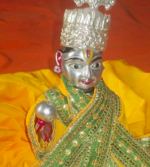






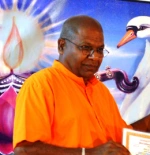


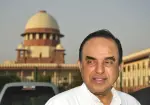
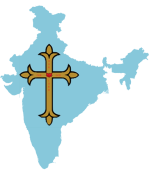


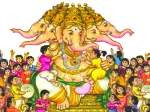



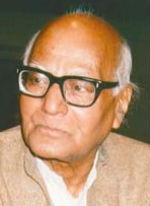






[…] Temple in Vellore Fort — the image had been removed earlier either by or because of the Nawabs of Arcot — and its use by British troops as a stable for horses; there was the partial demolition of […]
LikeLike
Nawab heirs get Rs 23 as stipend – Deccan Chronicle – Chennai – Sept. 21, 2010
Every month, Mohammad Muzaffer Hussain (68) a descendant of the Nawabs of Carnatic, receives a monthly stipend of Rs 23 for the maintenance of his five-member family. To receive this amount, he visits the Chennai collector’s office and gets a challan, then makes two trips to the RBI, before he receives the stipend in cash.
“I spend at least Rs 100 commuting, to receive this amount,” he said. His family, along with 122 other families have been identified as the descendants of the Nawab’s royal family who are entitled to this pension called the ‘Carnatic Stipend’ since the year 1801, when British India seized all administrative powers from the Carnatic Nawab Azeem Ud Dowlah.
“The British took away our lands and agreed to allot one-fifth of the revenue generated from the wealth for the maintenance of the Nawab and his family. The amount was not revised for several decades,” Mr. Hussain said. These descendants whose ancestors lived around Royapettah for centuries near the Amir Mahal palace are now in abject poverty and demand the state govt to revise the stipends to a reasonable amount.
“Some of the families receive a pension amount as low as Rs 3. We are aware that we cannot depend on this pension for our livelihood, but the state govt should increase it to some reasonable amount so that at least the effort taken to collect the amount is worthwhile,” he said. They claim that their repeated petitions have fallen on deaf ears.
Chennai collectorate officials, which is responsible for paying the Carnatic Stipends claim that by and large there has been a periodic revision of the pension amounts. However, the petitions of Nawabi descendants seem to have slipped between the cracks at the collectorate.
Question:
How much money does Amir Abdul Ali personally collect from the state?
Does he pay taxes on his vast estate, Amir Mahal, in Royapetta?
Why does he and the other Nawab heirs get any allowance at all?
The British made many agreements with the Rajas prior to Independence. The government of India has not kept any of these agreements. Indira Gandhi sidelined the Rajas completely in the 1970s when she took away their pensions. The Amir of Arcot is the only prince left to get a pension from the Indian government.
Why do the people of India pay this titled citizen a pension when their own princes—the Amir has stated publicly that he is not an ethnic Indian—have been sidelined and consigned to the history books?
LikeLike